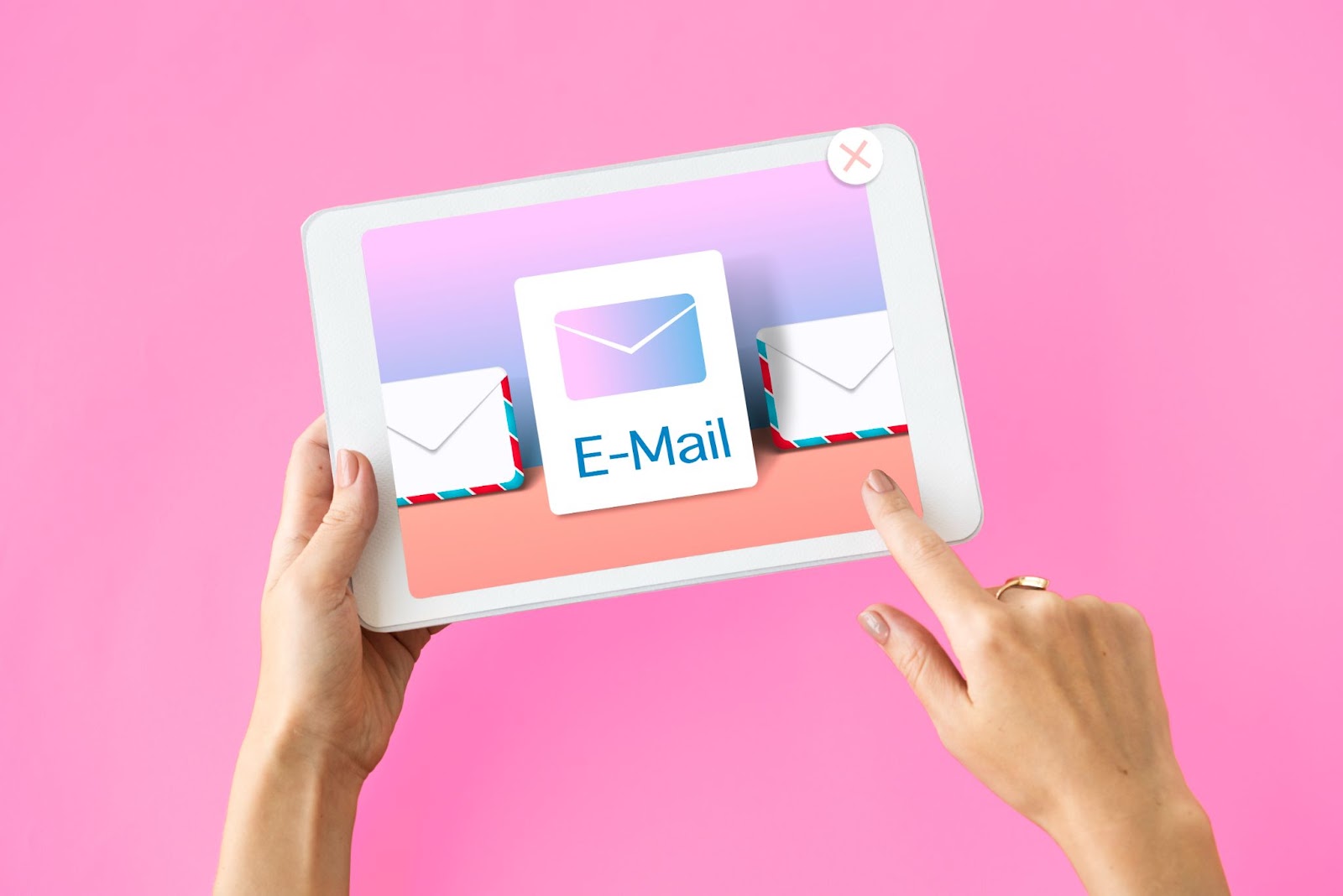Did you know only 23.9% of all sales emails are opened? Before this puts too much pressure on you I have included a step-by-step tutorial to write effective cold emails that could help you receive tons of responses.
Cold emailing can be the best way to generate new leads and add new customers if the cold email campaign is done correctly. Cold emails have to be short, precise and personalized in order to get the most number of replies. Alore has created and sent over 26 million cold emails in the last 4 years so trust us when we say we got you! On that note let’s begin.
[toc]

Step 1: Establish Your Goals
Now you may wonder why it is important to establish your goals before you start anything else.
Establishing your goals right before you draft your cold email will do two things -
- Set basic standards and direct the tone of your cold emails in the right way.
- It will give you an overview of how your cold email will look before you complete writing your cold email.
Before writing your cold email ask yourself these questions.
Who am I writing this cold email for?
Do I have relevant information about them to break the ice?
Am I selling them anything or am I sending this email to start a professional relationship?
Do I know spam laws and words that would affect my cold email campaign negatively?
Figuring out the primary goal of why you’re writing a cold email makes the rest of the writing process super easy. When your basics are covered in the beginning it’s time to dive deeper. Remember it is not necessary to pitch your product or service right away from the first email itself. Building a relationship with familiarity will result in better conversion rates.
Step 2: Get Your Subject Line Sorted
Did you know 33% of people open their emails based on the subject line?
The subject line is the most important part of your entire cold email. Every prospect decides to read or ignore an email primarily based on the subject line because it’s the very first thing they see! If you get your subject line for your cold email right you’ve knocked it out of the park. Good subject lines are directly related to your open rates.
To have good conversion rates you must get your prospect to open your emails in the first place. Emails with personalized subject lines get 50% higher open rates.
You could include tags that mention their names or where they work. For eg. {first name} or {company name} By doing this you’ve already differentiated yourself from most of the noisy chatter in the rest of the inbox. Here are some examples of good subject lines:
- {first name} fix your {pain point} in {x} days
- {first name} interested to know how to overcome {pain point}?
- {first name} make {pain point} 20% easier at {company name}
Make sure you write crystal clear, short subject lines that could be read from a mobile device as well. Your subject line should compel the reader to click on it to know more. Avoid looking salesy, nobody enjoys things being sold to them right off the bat. A good subject line intrigue’s the reader and piques their interest to find out more. This will only happen when you include something that the reader cares about it could be anything maybe a benefit or a reference point.
Finally, remember to avoid words that trigger spam filters like - free, guaranteed, $$$ signs. Your subject line should include your genuine intention of why you’re reaching out to the prospect.
Step 3: Ace Your Email Greeting
As trivial as it may sound it is actually very important to set the tone of your cold email right from the beginning. After your prospect clicks on your well-crafted subject line, the next thing they’ll do is - read the next line to know more.
If it simply contains a plain hi or hello most of the prospects won’t even bother to read the next few lines of the email. It is good to note address the recipient with their first name rather than using words like sir or ma’am.
Using the recipient’s name makes you look professional and friendly rather than a complete stranger. For eg. Hi {first name}, or Hello {first name} instead of using Hi Sir. See the difference? When you personalize your greeting it captures their attention and makes them want to read further.
Personalizing the greetings of your cold email will make it look like a one-to-one conversation rather than a boring routine email.
Adding your prospect’s name tag will give your prospect the impression that it was written only for them and that it is not software pumping out thousands of mass emails. Personalizing your email content is crucial for a successful cold email campaign and must be a part of your cold email strategy.
Step 4: Establish How They Got On Your Radar
You’re sending a cold email and that means the recipient doesn’t know you or the product/service you’re about to pitch. It is good to clear the air and establish a common ground between you and your prospect. This will help with lesser resistance from your prospect’s side. Addressing how you got to know about them or Where you saw their work first is a good way to bring familiarity between the sender and recipient.
Talking about the prospect first also shows that you’ve taken the time to research them. It is crucial to look as human and as genuine as possible. Robotic templates that follow the same flow of generic content get ignored. And for a good reason. It is necessary to clarify the reason why you’re cold-emailing somebody.
The best way to do this is by mentioning recent achievements which you could source from the prospect’s LinkedIn, Twitter, press release, or the company blog. You could talk about personal work achievements like an award or a recent article that they wrote. It could be anything but what you’re establishing here is - you’ve done your due diligence about the person you’re reaching out to and you’re here to start a genuine conversation that could possibly lead to sales later.
Step 5: Introduce Yourself
Now that you’ve hit it off with a good beginning, you’re free to introduce yourself in the most relatable and polite way possible.
Clearly specify who you are and what you do in simple sentences. Mention the reason why you’re specifically contacting them. And merge basic relevant points about them in your introduction.
For eg - I am Sam Smith and I’m the tech lead for a pre-sales and CRM company called Alore. I wanted to reach out to you because I recently read your article about xyz and have relevant industry data to support the article. I thought you’d be interested in finding out more.
It is not always necessary to merge points about the sender in your introduction, but it sure helps!
Step 6: Keep It Super Simple
Writing a cold email is all about establishing a connection even though you don’t technically know the sender. Fancy words and technical jargon could confuse the recipient. Even though it is tempting to use rich vocabulary this is not a novel.
Your primary aim should be to reduce the recipient's reading time as much as possible. That is possible when you use simple words and construct short sentences. Think of it as a message you’d send to people you know.
You wouldn’t dare to use words like extrapolate! If you do you’re a language enthusiast and that’s beside the point. Your cold email should have a maximum of three short paragraphs separated with appropriate spacing. Write like you would talk if the person was right in front of you. Do not overcomplicate your cold email with too many content aspects. This is a basic test but if a fifth grader can understand the contents of your cold email you’re good to go.
Step 7: Include One Call Action
The CTA is the one true test of whether your cold email is a success. Your CTA must be compelling enough for the prospect to schedule a call or a meeting or just reply to your cold email. A good CTA is always specific about the action it wants the reader to take.
It is necessary to include a single CTA at the bottom of your email. Do not use multiple CTAs in your cold emails it looks like you’re asking way too much from the recipient. Make the CTA as convenient as possible.
Include CTAs that look like they’ll take less than a minute to complete. What I mean by that is include CTAs that take than 1 min or less to decide. For that, the CTA must focus on low effort. Make an easy request which is impossible to say no to.
Take initiative and mention a specific date and time to connect. Ask a direct question preferably with easy options. That way the recipient could choose an option in a matter of seconds without having to think too much and just click on the option. Finally, always mention your number and details in your sign-off signature.
Step 8: Follow-Up
Sending follow-up emails could increase your response rates by 2x. No matter how perfectly written your cold email is, sometimes people get busy or they simply miss it due to other stuff going on in their day. Nevertheless, it is your responsibility to nudge them to open your emails and reply to them. This is called following up.
Keep in mind that follow-up emails aren’t just reminders you must always add something extra of value to those emails. You could send 1 follow-up email but the ideal number to follow up is 3 times.
You can conveniently send 3 follow-up emails to receive responses. Most of the time just a single cold email is not enough for the recipient to take the time and reply. Actively being a part of the recipient's inbox will make the prospect familiar with you or your service. This will lead to a much-awaited reply.
Never assume that the prospect is already aware of your service. Always mention parts from the first cold email in your follow-up emails. This will help the recipient recall you or your brand better. Most importantly do not forget the power of follow-up emails this is where most conversions happen!
Final Words:
A good cold email is always personalized, relevant and straightforward. It is necessary to know that not all cold emails receive instant responses, some of them take time. Cold email campaigns are all about persistence. Take good inspiration from templates but avoid copy-pasting them blatantly and you’re good to go.
Mastering how to write a good cold email that gets tons of responses will take time but with the information and tips, you have from this blog you’re ready to write an effective cold email that will end up giving you responses in your inbox to begin new conversations!








